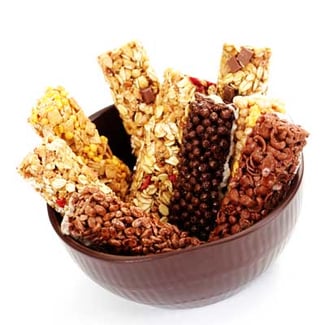Grab and go has become the modern way of living for many people. But, which ones are actually healthy?

Some bars are loaded with so much sugar you might as well be eating a candy bar. Look for the word “syrup” which is another word for liquid sugar. Some bars can easily contain over 20g of added sugar or 4 tsp of sugar. You may consider these type of bars if you are a physically active person.
Other bars add artificial sweetener and are advertised as low-carb and low-calorie bars. They may add sugar alcohol (sorbitol, maltitol, xylitol) and when they are consumed in excess, they may cause gastrointestinal problems – bloatiness, gassiness, and sometimes, diarrhea.
Some energy bars sound healthy because they are covered in yogurt, but they can also be high in saturated fat due to the addition of palm or coconut oil.
Most people eat enough protein in their diet, so the additional protein is not really necessary.
If you are trying to find something healthier, follow these steps:
- Read the ingredient list on the food label and choose those that use whole foods such as fruits, vegetables, nuts, seeds, sprouted grains and are sweetened with real fruit.
- Avoid or limit artificial sweeteners and artificial preservatives.
- Limit refined sugars and syrups. Check the ingredient list to find out the source of sugar.
- Choose a bar that provides at least four grams fiber and no more than three grams saturated fat.
- If you are trying to avoid weight gain, check the calorie count. As a between-meal snack, look for bars with roughly 150 calories for women and 200 calories for men.
While many energy bars can be better than eating junk food, it is important to not depend only on them as they may not offer all the nutrients and phytochemicals that you need. Try to incorporate more unprocessed whole foods such as fruits, vegetables, nuts, seeds, legumes and low fat dairy products for complete nutrition.


